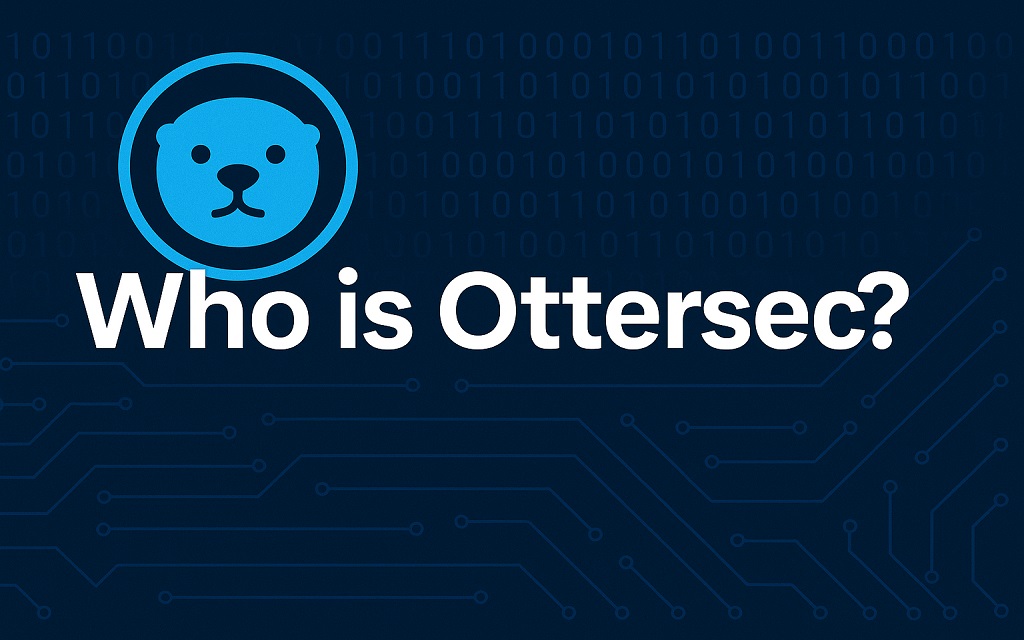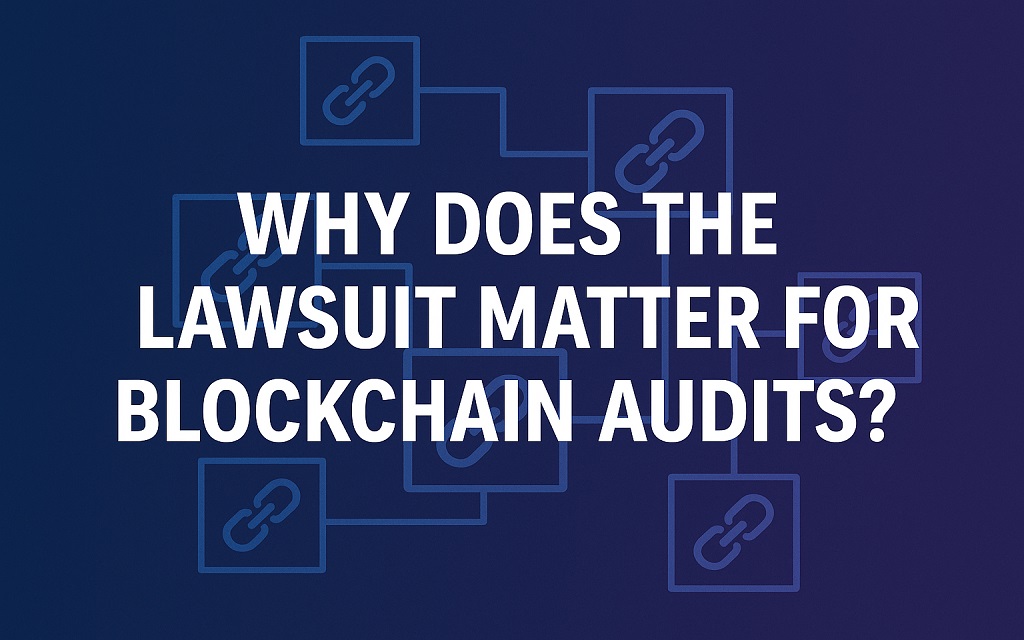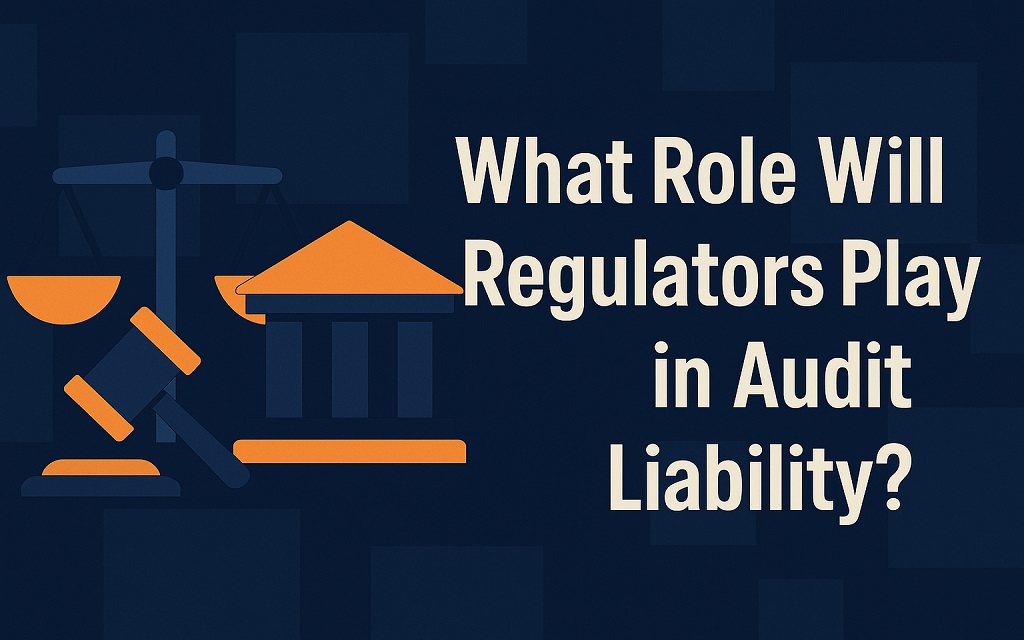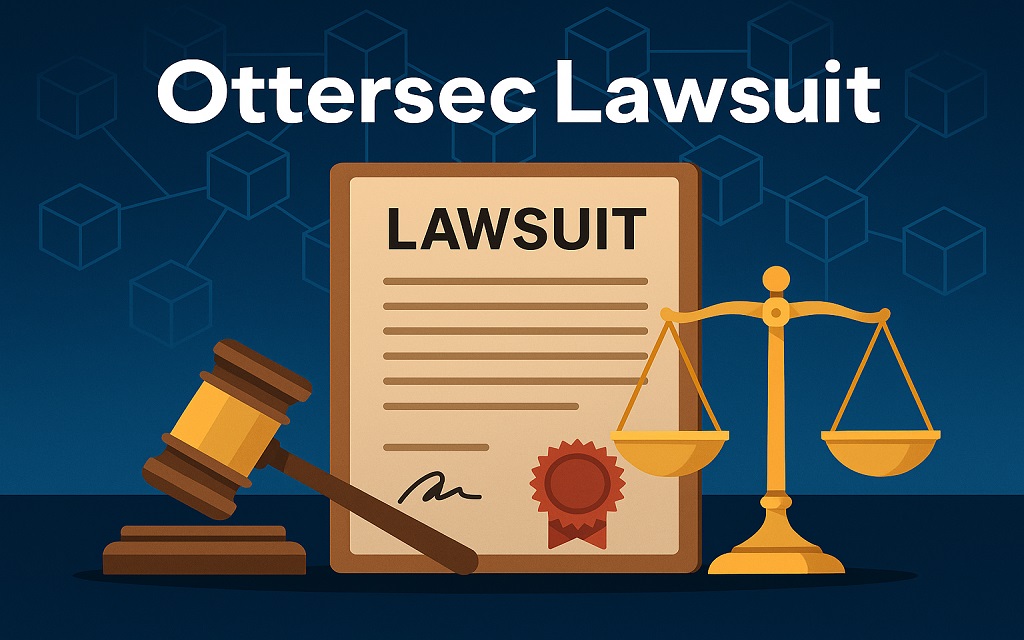Who is Ottersec?
OtterSec was formed in February 2022 as a blockchain security firm. The original operating agreement listed Robert Chen and Sam Mingsan Chen as the only members, 50/50. On Apr 16, 2022, an amended operating agreement changed ownership to 60% Robert Chen / 40% Sam Chen. The opinions also describe early revenue, Maryland-based personnel/addresses, and Maryland-located infrastructure—facts the Court relied on in its jurisdiction analysis.
It is important to note that Ottersec presented itself as a trusted player. The firm worked with multiple projects across Ethereum and other chains. Audit reports from Ottersec were often quoted in whitepapers and press releases. According to DeFiLlama, more than 60 percent of major DeFi projects in 2022 promoted audits as part of their marketing. You should see how Ottersec gained visibility through such mentions.

You should also consider the scope of Ottersec’s services. The firm did more than simple code checks. It also reviewed logic design, integration points, and risk exposure. A typical audit from Ottersec included issue classification as critical, high, medium, or informational. For example, a 2021 project highlighted how Ottersec flagged a medium-risk issue that was later patched before launch. That gave investors more confidence in the protocol.
You should also understand Ottersec’s reputation in the industry. Many developers praised its reports for detail and clarity. Forums often compared Ottersec to larger firms such as CertiK and PeckShield. Some argued that smaller teams like Ottersec could give more personalized attention. According to a 2023 survey by Hacken, 48 percent of crypto developers said they prefer boutique auditors over large firms because of closer engagement. That statistic shows why Ottersec appealed to many projects.
You may ask why Ottersec became central to a lawsuit despite its reputation. The answer lies in trust. Investors trusted the brand. Developers trusted the audits. When a hack exposed vulnerabilities, confidence collapsed quickly. You should see that the lawsuit now questions not only one firm but also the entire model of trust that audits provide.
What is the Ottersec Lawsuit About?
The complaint alleges Lanham Act false designation, breach of contract, and state-law claims such as breach of fiduciary duty, fraud, misappropriation/conversion, and tortious interference, arising from conduct around OtterSec’s operations and dissolution. The Mar 11, 2024 opinion addresses personal jurisdiction; the Jan 27, 2025 memorandum opinion and order reflect a mixed ruling on a later motion.
You should also note that the lawsuit goes beyond a simple technical error. The claims against Ottersec include negligence, breach of contract, and fraud. In legal terms, negligence means a failure to act with the care that a reasonable professional would exercise. For example, if a financial auditor signs off on false accounts, the law may hold them responsible for losses. In the same way, the plaintiffs argue that Ottersec’s oversight exposed investors to heavy damages.
You may ask what makes this Ottersec lawsuit different from earlier disputes. The answer lies in the role of audits in DeFi. Audits serve as trust signals for investors. A report from PwC shows that 46 percent of institutional investors consider third-party audits a key factor before investing in digital assets. When an audit fails, confidence in the entire sector suffers. You can see how a single flawed report can spark a chain reaction of mistrust across the market.
You should also look at the parties involved. The plaintiffs include the project team and investors who lost funds. The defendants are Ottersec and its partners. Media reports note that Ottersec argued that the audited code was not identical to the code deployed by the project. If true, this raises another legal question. Can an auditor be blamed if the client changes the code after the review? Courts will now examine this issue closely.
It is essential to know that the lawsuit has implications beyond the courtroom. If the plaintiffs succeed, auditors across the industry may face stricter legal standards. If they fail, investors may lose confidence in audits altogether. You can already see debate on forums where users compare Ottersec’s case with controversies involving other audit firms, such as CertiK. The outcome will not only define liability but also influence how future audits are conducted.
Brief timeline
Feb 2022: OtterSec formed; initial 50/50 ownership.
Apr 16, 2022: Amended agreement → 60/40 (Robert/Sam).
Mar 11, 2024: Court denies motion to dismiss for lack of personal jurisdiction.
Jan 27, 2025: Court issues Memorandum Opinion/Order (granted in part / denied in part).
Why Does the Ottersec Lawsuit Matter for Blockchain Audits?

You should know that the Ottersec lawsuit matters because it questions the reliability of smart contract audits. Audits are supposed to give investors confidence. A failed audit undermines the very foundation of trust in decentralized finance. According to a 2023 report from CertiK, more than $ 1.6 billion was lost to DeFi exploits despite audits. That figure shows you that audits do not always prevent losses.
It is essential to know that the case challenges the role of auditors in the crypto economy. Courts now need to decide whether auditors have a duty of care similar to that of accountants or lawyers. If the answer is yes, auditors may face lawsuits each time a project fails. You can imagine how this would change the business model of firms like Ottersec, CertiK, or PeckShield. Higher liability would mean higher costs.
While OtterSec provides security audits, the federal case here isn’t an audit-negligence verdict. It does, however, touch brand/ownership and commercial conduct affecting a well-known security firm—issues that influence how DeFi teams and clients document governance, trademarks, and agreements.
It is helpful to compare crypto audits with finance audits. After the Enron scandal, governments enacted strict laws, such as the Sarbanes-Oxley Act. Accountants became regulated gatekeepers. The Ottersec case may lead to a similar outcome for blockchain security. According to the World Economic Forum, 60 per cent of executives believe that regulation will improve trust in digital assets. You should see that this legal precedent could be the first step toward that direction.
How Does the Law Define Negligence in Crypto Audits?
You should first understand the legal idea of negligence. Negligence means a failure to exercise reasonable care under specific circumstances. Courts often ask if a professional acted as a reasonable person in the same role would have worked. In traditional finance, auditors must meet this duty of care. If they miss obvious errors, the law can hold them liable.
It is essential to know that courts may now apply the same principle to blockchain auditors—a crypto audit checks for security flaws in smart contracts. If an auditor ignores clear vulnerabilities, plaintiffs can argue that the auditor acted with negligence. For example, in the Ottersec case, the plaintiffs say that critical bugs should have been detected. You can see how a judge will examine the audit process line by line.
You should also remember that contracts play a role in defining negligence. Audit agreements often include disclaimers. Firms try to limit liability by stating that audits are best-effort reviews, not guarantees. Courts must then decide if disclaimers protect the auditor when significant investor losses occur. According to a 2022 survey by Deloitte, 67 percent of companies reported that liability disclaimers in contracts are frequently challenged in court. That statistic shows you that disclaimers may not always hold up.
It is helpful to consider how negligence is judged in similar sectors. In medicine, doctors are liable if they fail to follow standard practice. Additionally, in engineering, contractors are liable if their work does not meet industry codes. In the same way, blockchain auditors may be judged against evolving security standards. For example, guidelines from the OpenZeppelin security framework are now cited as benchmarks for audits. If Ottersec did not follow such benchmarks, courts may view that as negligent conduct.
You may also ask how negligence affects investors. If courts rule that auditors owe a duty of care, investors could sue directly after a failed project. That would increase legal protection for users but also raise audit costs. According to Chainalysis, DeFi accounted for 82 percent of crypto hacks in 2022. With numbers that high, it is no surprise that audit negligence now draws more attention. You can see how the Ottersec case could set a model for liability in future disputes.
What Legal Claims are Raised in the Ottersec Lawsuit?
You should know that the Ottersec lawsuit includes several legal claims. The plaintiffs rely on three main arguments. Each one reflects common disputes in professional liability.

- Negligence in the performance of an audit
- Breach of contract between auditor and client
- Fraud based on alleged misrepresentation
It is essential to understand each claim separately. Negligence means a failure to apply reasonable skill and care. The plaintiffs argue that Ottersec failed to identify major flaws. Courts will ask if another competent auditor would have detected the same vulnerabilities. If the answer is yes, negligence may apply.
You should also note the claim of breach of contract. The agreement between Ottersec and the DeFi project included a code review. If the work fell below the agreed standard, the law may view that as a breach. According to the American Bar Association, breach-of-contract disputes account for more than 60 per cent of commercial cases in U.S. courts. That statistic highlights how often contracts become the central issue.
You should then consider the allegation of fraud. Fraud requires proof of intent. The plaintiffs must show that Ottersec knowingly misrepresented its work. In practice, proving intent is more difficult than proving negligence. For example, in the Enron case, prosecutors needed evidence that auditors were aware of false accounting. Without similar evidence, a fraud claim may fail.
It is helpful to compare these claims with past crypto disputes. In 2021, investors sued an exchange over security failures, arguing negligence and breach of contract. The fraud claim did not succeed because the plaintiffs could not prove deliberate misrepresentation. That case shows how courts may treat the different claims in the Ottersec dispute.
You may also ask why all three claims matter together. Multiple claims increase plaintiffs’ chances of success. If fraud fails, negligence may still succeed. If negligence fails, breach of contract may still stand. Courts often allow overlapping claims so that at least one pathway leads to liability. According to Bloomberg Law, nearly 70 percent of financial misconduct cases involve multiple overlapping claims. You should expect the Ottersec lawsuit to follow the same pattern.
How Did Ottersec Respond to the Allegations?
You should know that Ottersec denied the claims made in court. The firm stated that the audit followed professional standards. It argued that the vulnerability exploited in the hack did not exist in the code its team reviewed. That defense shifts the blame back to the project developers.
It is important to note that Ottersec highlighted the limits of audits. The company explained that no audit can guarantee complete safety. The defense team relied on contract clauses that described the audit as a best-effort service. Similar clauses appear in many audit contracts across the crypto industry. According to a 2023 study by Cambridge University, more than 75 percent of blockchain security contracts include disclaimers limiting liability. You should see that the firm follows a common practice.
You should also consider Ottersec’s communication strategy. The company issued public statements on its website and through industry media. It assured clients that its methods remain reliable. The firm stressed that smart contract security requires shared responsibility between auditors and developers. For example, auditors review the code they receive, but developers decide what version of the code is deployed. If the deployed version differs from the audited one, auditors may not be at fault.
It is helpful to compare Ottersec’s stance with reactions in other industries. In cybersecurity consulting, firms often argue that they can reduce risk but not eliminate it. When breaches occur, consultants usually defend themselves by pointing to client errors. A similar defense appeared in lawsuits after large IT breaches in 2017 and 2018. Courts examined contracts and often limited liability when disclaimers were clear.
You may ask how investors and the public responded to Ottersec’s position. Some investors supported the firm’s explanation. Others argued that audits are sold as trust signals and should carry greater responsibility. Online forums feature heated debate as users compare Ottersec’s responses to controversies involving CertiK and other firms. According to Cointelegraph, over 60% of DeFi users now view audits with caution. That statistic shows the lawsuit has already damaged investor confidence, regardless of the legal outcome.
What Lessons Should You Learn as an Investor?
You should understand that the Ottersec lawsuit offers essential lessons for crypto investors. The first lesson is that an audit does not guarantee anything. An audit is only a review of the code at a specific time. If developers change the code later, the audit may become less valuable. According to a 2022 Chainalysis report, DeFi hacks accounted for 82% of all crypto theft. That statistic shows you that audits alone cannot protect investors.
You should also learn to read complete audit reports. Many projects highlight only the positive findings. The marketing material often hides unresolved issues. For example, an audit may identify a high-risk vulnerability but mark it as “not fixed.” If you only read the summary, you miss that warning. A 2021 case demonstrated that an audited project lost funds due to the failure to address unresolved issues. Investors who trusted the audit stamp lost everything.
It is also essential to verify the audit firm’s credibility. Not all firms have the same standards. Some are known for quick reviews at lower prices. Others conduct deeper analysis. According to a 2023 Messari survey, more than 40 percent of crypto users say they do not trust audit firms that produce too many reports in short timeframes. That figure underscores the need for you to check the auditor’s track record.
You should also demand transparency from project teams. Ask if they made code changes after the audit. Insist on access to the full report. Some investors now request proof that the deployed code matches the audited code. Tools like Etherscan allow you to compare deployed contracts with the versions submitted for audit. That small step can prevent significant losses.
You may ask if investors should push for regulation. Many already do. According to the World Economic Forum, 60 percent of institutional investors believe regulation of auditors will increase trust. If the Ottersec case leads to new rules, investors may gain stronger protection. Until then, you must combine audits with your own due diligence. Do not rely on a single trust signal. Instead, use multiple checks before you invest.
How Can Developers Protect Projects After Audits?
You should know that developers cannot stop at a single audit. Security must continue after the report is delivered. Audits provide a snapshot, but threats evolve every day. According to Immunefi, more than 10 billion USD in losses from hacks have been reported since 2020. That number proves that post-audit protection is critical.
Developers must run multiple audits. A second audit often finds issues missed in the first. Different firms use different methods. For example, one company might concentrate on logical errors while another examines integration issues. Because a second audit discovered a vulnerability missed in the first assessment, a DeFi project in 2022 was spared a significant exploit. The importance of different viewpoints is evident.
You should also set up bug bounty programs. White-hat hackers often detect issues faster than formal teams. Researchers who report bugs can be rewarded by developers using platforms like Immunefi and HackerOne. Bug bounty hunters contributed to the acquisition of about 70 million USD in cryptocurrency assets in 2023. That example shows why developers must invite outside help.
You should also maintain continuous monitoring tools. Automated systems can track contracts after deployment. Alerts help teams respond before a flaw turns into a full exploit. For example, the Forta network provides real-time detection of suspicious activity on Ethereum. Developers who use such systems can act quickly. According to Chainalysis, rapid detection reduces losses by up to 50 percent in reported incidents.
It is helpful to stress the need for transparency. Developers should share complete audit reports with investors. Hiding issues creates distrust. You should also publish proof that the deployed code matches the audited version. In 2021, a project faced backlash when users discovered hidden code that had not been audited. The token value collapsed within days. That case proves that transparency protects both the team and the investors.
You may also ask how developers can prepare for legal risks. Lawyers now advise teams to include disclaimers in smart contract documentation. Clear risk warnings reduce liability. According to a 2023 survey by Lexology, more than 55 percent of DeFi projects updated their terms of service to include legal disclaimers. You should view that as a new standard practice in project protection.
What Role Will Regulators Play in Audit Liability?

You should understand that regulators will play a decisive role in shaping audit liability. Courts can decide individual disputes, but regulators set the broader framework. In finance, regulators define standards for auditors and enforce penalties. A similar shift may now happen in blockchain.
It is essential to know that governments already monitor crypto markets. In the United States, the SEC and CFTC both investigate token projects. They focus on investor protection. If the Ottersec case highlights gaps in audit responsibility, regulators may intervene. According to a 2023 PwC report, 57 percent of executives in the financial sector expect new crypto audit standards within three years. That prediction shows you where the trend is heading.
You should also consider Europe. The EU has approved the Markets in Crypto-Assets Regulation (MiCA). It introduces strict disclosure requirements for issuers. Future updates may necessitate audits to ensure compliance with uniform standards. For example, firms may need accreditation before offering audit services. Investors would then know that each audit is conducted in accordance with a legal baseline.
You should also look at Asia. In Singapore and Japan, regulators already require crypto exchanges to be licensed. Expanding that model to auditors would be a natural step. According to a 2022 report by the Monetary Authority of Singapore, over 40 percent of security incidents in local crypto firms involved poor audit practices. That figure shows why regulators see audits as a weak point.
You may ask how regulation would change costs. Stricter rules often increase service providers’ expenses. Audit firms may need liability insurance. They may need to adopt longer processes. Developers would pay more for compliance. According to Deloitte, compliance costs in financial auditing rose by 30 percent after Sarbanes-Oxley in 2002. You should expect similar increases in blockchain audit activity as regulation expands.
It is also helpful to think about the investor impact. Regulation may raise costs, but it also builds trust. Investors gain assurance that audits meet a minimum level of quality. A survey by the World Economic Forum found that 60 percent of institutional investors would increase exposure to crypto if regulators create strong audit standards. That evidence shows you why regulation may benefit the market despite higher costs.
Can the Ottersec Lawsuit Set a Precedent in Law?
You should be aware that a significant precedent could be set in the Ottersec case. Courts frequently base their future decisions on earlier opinions. Future cases will adhere to the criteria if a judge determines that blockchain auditors have a duty of care. That change would shape the entire industry.
It’s critical to keep in mind that other fields have precedents. The Sarbanes-Oxley Act brought about changes in accounting following the Enron scandal. Strict accountability for physicians was established in the medical field by malpractice lawsuits. Moreover, in engineering, safety codes became enforceable after landmark cases. You can see that one ruling often reshapes professional responsibility.
You should also consider the unique nature of blockchain. Smart contracts operate without central control. Investors rely heavily on auditors as gatekeepers. If courts recognize that role, auditors may become regulated professionals. According to Bloomberg Law, more than 65 percent of legal experts believe crypto disputes will establish new categories of liability within the next decade. That opinion shows you why Ottersec’s case may be remembered as a turning point.
You should also note how precedent works across borders. A U.S. ruling may influence Europe or Asia. For example, rulings in U.S. courts often shape global corporate governance. A precedent on audit liability could push regulators worldwide to harmonize standards. The MiCA framework in Europe would adapt quickly if U.S. law moves first.
You may ask how quickly such a precedent would spread. Legal scholars explain that once one case establishes liability, plaintiffs in other jurisdictions adopt the same arguments. In 2021, lawsuits against exchanges in the United States inspired similar claims in South Korea and Singapore. The same pattern may happen after Ottersec.
It is helpful to reflect on investor confidence. If courts impose liability, audits gain credibility as enforceable assurances. If courts reject liability, audits may lose value as trust signals. According to a 2023 survey by Chainalysis, 54 percent of crypto users already question the reliability of audits. A precedent in the Ottersec case could either strengthen or undermine that confidence. You should see how much is at stake.
What is the Future of Smart Contract Auditing?
You should understand that the future of smart contract auditing depends on the outcome of cases like the Ottersec lawsuit. If courts impose liability, audits will evolve into regulated services. If courts reject liability, audits may remain informal checks. Either way, the industry will not look the same.
It is essential to know that stronger standards are already forming. Security frameworks such as OpenZeppelin publish detailed guidelines. Many auditors now follow them to avoid legal risk. According to Electric Capital, more than 45 percent of audited DeFi projects in 2023 cited OpenZeppelin standards in their reports. You should expect such frameworks to become industry benchmarks.
You should also expect more automation. AI-driven tools can scan contracts faster than human auditors. They reduce oversight gaps and support continuous monitoring. For example, platforms like MythX and Slither already automatically detect vulnerabilities. In 2022, automated scanners flagged thousands of issues across Ethereum contracts before deployment. That proves technology will expand the scope of audits.
You should also consider regulation as a key driver. Governments may enforce minimum audit requirements. In finance, audits became mandatory after scandals. A similar model could apply in blockchain. According to PwC, 57 percent of executives believe that global rules will govern crypto audits within five years. That view reflects growing acceptance of regulation as inevitable.
You may ask how costs will change. Higher standards and insurance will raise audit prices. Smaller projects may struggle to afford full reviews. The market could split between premium audits for major protocols and basic checks for small teams. In 2021, large DeFi projects like Aave and Compound paid for multiple audits before launch. Smaller projects often relied on a single, more cost-effective review. That contrast will widen if liability increases.
It is helpful to consider the role of investors in shaping the future. Investors can demand transparency and accountability. They can reward projects that publish complete reports and adopt continuous monitoring. According to CoinGecko, tokens backed by transparent audits gain 20 percent more investor interest compared to those without. That figure shows that investor pressure will drive improvements.
You should also realize that the Ottersec case acts as a warning. It tells you that audits are no longer just technical exercises. They are legal and financial commitments. The future of auditing will combine law, technology, and regulation. You should prepare for a system in which auditors act as trusted professionals, bound by clear duties.
Conclusion
The Yao v. Chen litigation is an ongoing federal case in Maryland concerning OtterSec’s formation, ownership, and dissolution. After the Court kept the case in Maryland (Mar 2024), it issued a mixed ruling on further motions (Jan 2025). Watch the docket for subsequent orders or a potential resolution.
You should remember one final lesson. The crypto market depends on trust. Trust grows when legal clarity exists. The Ottersec lawsuit could provide that clarity. You should follow the case closely because its outcome will shape how you view audits, security, and accountability in blockchain.
Disclaimer: This article provides a general overview of the Ottersec lawsuit, based on publicly available information, and is intended for informational purposes only. It does not provide legal advice. You must consult a licensed attorney for any legal decisions.
Sources & Documents
Memorandum Opinion (Mar 11, 2024) — denies personal-jurisdiction motion (PDF). Justia Law
Memorandum Opinion (Jan 27, 2025) — granted in part / denied in part (summary page). vLex




